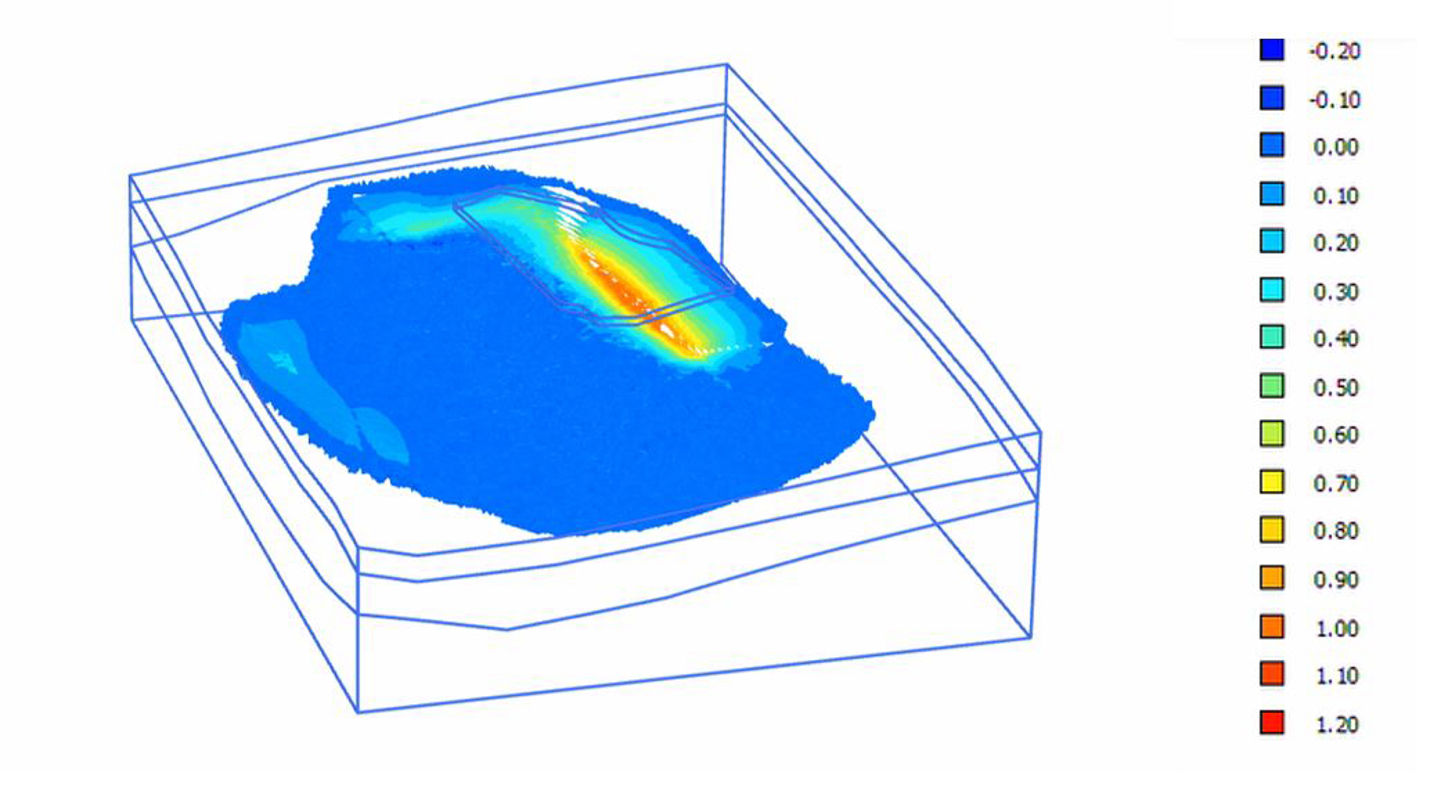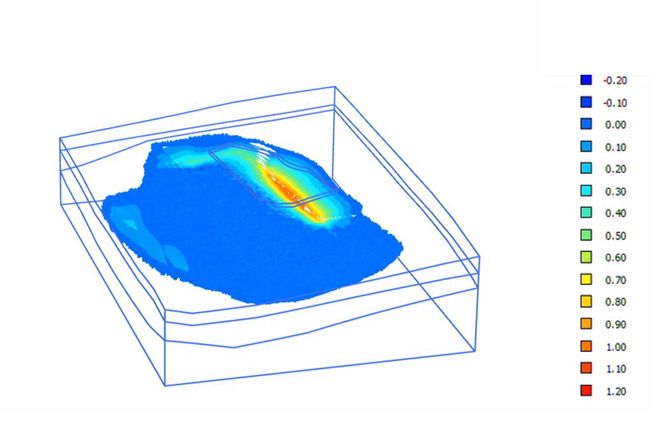NGI-GBV – Quantification of 3D effects on slope stability in QC terrain

It is a common practice to perform a 2D LEM (limit equilibrium method) or 2D FEM back-analyses to access safety factor (SF) of failed slopes.
However, such analyses in a lot of scenarios have led to spurious SF values even for failed slopes which as per definition should have a SF value below 1.0. The ill-estimation of the safety factor using a 2D framework of analyses amongst other factors could be due to the method's incapability to account for 3D effects and strain-softening in sensitive materials. This project plans to investigate strain-softening effect in a 3D domain on the computed SF by comparing results of 2D and 3D calculations for a model slope. The outcomes of the approach will be validated against 3D-analyses of the 2015 Skjeggestad bridge slope failure. The goal of the project is to provide recommendations on the choice of 3D or 2D modelling of slopes. The recommendations would try to encompass scenarios under which 3D effects would be dominant and would lead to unreliable SF predictions with 2D modelling.
The project is a collaboration between NGI and the The Norwegian Public Roads Administration (SVV).

Figure 1. Contour depicting development of softening in the quick clay layer for the Skjeggestad bridge slope. The colour scale illustrates the degree of softening (where 0 no softening, and 1 is complete softening).

Amanda Johansen DiBiagio
Project Engineer I Slope Stability and Risk Assessment amanda.johansen.dibiagio@ngi.no+47 906 30 922